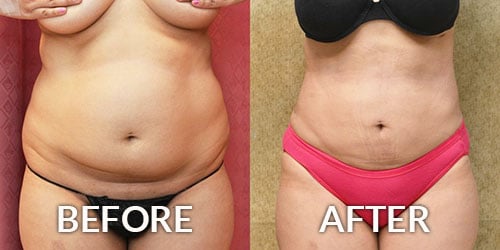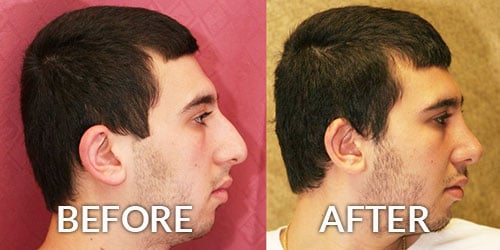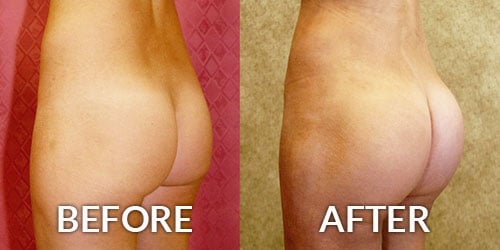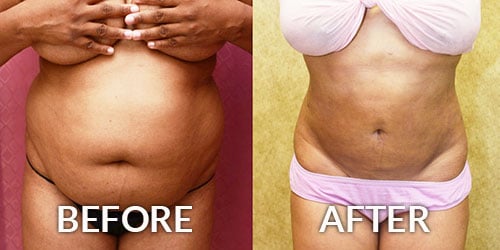Skin Resurfacing
Consultations offered at our three convenient locations in Encino, Glendale and Bakersfield
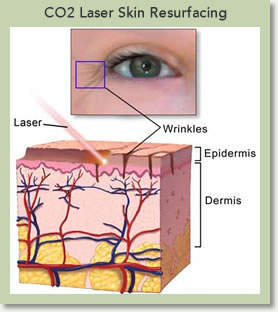
What was the secret of Cleopatra’s smooth and clear skin? It was more than the daily milk baths that she took. It was actually the sour milk that was in the bath. Sour milk has lactic acid, which is now used as one of the chemicals for peeling facial skin. It removes the top layer of skin and with it, the brown pigments, fine wrinkles, and skin irregularities.
There are many methods available for skin resurfacing. Chemical peels denature cells in the top layer of skin, while dermabrasion abrades them away. Laser, which is the latest technique, removes the superficial skin by evaporating it. Each one of these techniques has advantages and disadvantages. Depending on your needs, Dr. Younai will recommend the best option for you.
Contents
The Benefits of Skin Resurfacing
Skin resurfacing is a tried-and-true method for rejuvenating your appearance, treating skin blemishes and refreshing your complexion. Over time, the surface of your skin will show the signs of wear and tear, leading to fine lines, wrinkles, discoloration, and dullness. When it comes to preventing premature signs of aging and preserving your youthful appearance, there is nothing like professional quality skin care such as skin resurfacing treatment.
Skin resurfacing treatments have evolved, now taking advantage of advanced techniques and even laser technology.
The main principal with skin resurfacing is to achieve a safe, quick and effective exfoliation of the skin. With more powerful modern treatments such as Laser skin resurfacing, the laser penetrates into the dermis layer to achieve deeper rejuvenation by triggering your skin’s natural healing response and collagen production.
Skin Care
Skin resurfacing is an effective, but safe skin care solution that addresses the effects of sun damage. Sun damage is one the most primary issues when it comes to aging symptoms and loss of skin youthfulness. We now know that the UVA and UVB rays that are emitted by the sun have a very specific effect on your skin cells. When UV rays penetrate into your skin cell’s structures, it causes an increase in free radicals, oxidative damage, and inflammation. This reaction increases the rate of breakdown in your skin and essentially speeds the effect of aging.
Skin elasticity degrades sooner, resulting in premature fine lines, wrinkles and sagging.
While an essential element to great skin is prevention, there are many options that can turn back the clock on aging and reverse the effects of wear and tear.
Conditions Treated
Skin resurfacing treatments are incredibly effective and versatile, capable of treating a large variety of conditions such as:
- Acne
- Acne Scars
- Fine Lines
- Wrinkles
- Dull Complexion
- Discoloration
- Age Spots
Skin Resurfacing Techniques
Chemical Peels
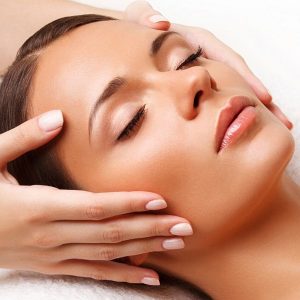 The kind of chemical peel varies depending on the type of solution used. All of them dissolve the top layer of skin by a chemical reaction. Phenol, which is one of the oldest solutions used, is very effective in removing moderately deep wrinkles. It has the potential disadvantage of bleaching the skin and causing heart rate irregularities if a patient is not adequately monitored. TCA, or Trichloroacetic acid, is a weaker acid, which is good for removing finer wrinkles. Its strength can be adjusted by changing its concentration. Fruit acids or hydroxy acids, such as Glycolic and lactic acid are generally weaker acids derived from the naturally available fruit acids. Hydroxy peels, when done in a very light fashion, are called micro-peels.
The kind of chemical peel varies depending on the type of solution used. All of them dissolve the top layer of skin by a chemical reaction. Phenol, which is one of the oldest solutions used, is very effective in removing moderately deep wrinkles. It has the potential disadvantage of bleaching the skin and causing heart rate irregularities if a patient is not adequately monitored. TCA, or Trichloroacetic acid, is a weaker acid, which is good for removing finer wrinkles. Its strength can be adjusted by changing its concentration. Fruit acids or hydroxy acids, such as Glycolic and lactic acid are generally weaker acids derived from the naturally available fruit acids. Hydroxy peels, when done in a very light fashion, are called micro-peels.
Dermabrasion
This technique is achieved by sanding the skin with a power sander. Because it can remove deep layers of skin, it was traditionally used for the removal of acne scars. Currently, the laser can also be used for acne scar removal. Sanding the top layer of skin by dermabrasion takes skill and dexterity. Micro-dermabrasion is a very weak method of abrading the skin by blasting it with sand-like crystals.
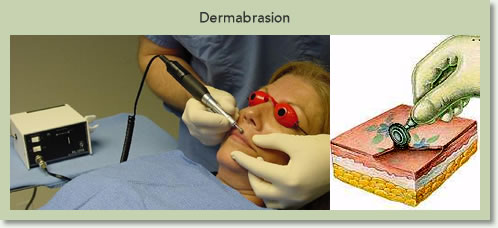
Lasers
This is the latest tool used for skin resurfacing. It literally evaporates the top layer of skin. Both CO2 and Erbium lasers sources are used; although CO2 is stronger. Ultrapulse CO2 laser uses a computer to deliver a very high-energy laser pulse over a very short time. This evaporates the superficial skin cells without damaging adjacent skin collagen. This innovation reduces the risk of scaring, Therefore; it makes Laser in some ways a safer method compared to other techniques. Scientific research has also shown that laser energy causes shrinkage or tightening of the skin. This helps people with facial aging to be able to postpone having a facelift.
Laser skin resurfacing is effective due to a process called selective photothermolysis.
The Ultrapulse CO2 and Erbium lasers have been carefully calibrated to target specific “chromophores” in the skin. “Chromophores” are particles that make up discolored blemishes in the skin such as age spots, liver spots, and cafe-au-lait stains. The Ultrapulse lasers deliver a burst of high-intensity heat that is more quickly absorbed by these chromophores, causing the discoloration particles to vibrate rapidly and break down. The Ultrapulse CO2 and Erbium lasers can deliver energies at different wavelengths and pulse durations, which gives them the capability to treat a variety of skin blemishes on a variety of skin complexions. The heat pulse delivered by the laser energy is so precise that it leaves surrounding skin tissue unharmed.
Laser treatments are also shown to provide rejuvenation by trigger the skin’s natural healing response, delivering fresh collagen and growth factors to the skin to promote a healthier, youthful glow.
Recovery
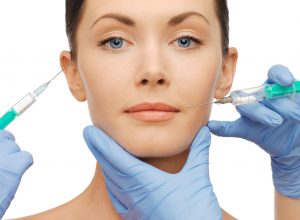 Skin resurfacing via any of the mentioned techniques removes the top layer of skin leaving behind a raw surface. It takes approximately ten days for the new skin to grow back. During this time your surgeon will recommend different regimens for skin healing. You should know that this is a time intensive period for you and your doctor. After the new skin has grown back, your skin will be of a different tone and color for a period of approximately six to eight weeks. During this stage, some people apply special make-up to cover up the “pinkish” skin. You should also avoid direct sun for there are risks of developing darker skin (hyperpigmentation). There is also the risk of the color changes becoming permanent. This may depend on your skin type and also how and if your surgeon has pre-treated your skin with proper medications.
Skin resurfacing via any of the mentioned techniques removes the top layer of skin leaving behind a raw surface. It takes approximately ten days for the new skin to grow back. During this time your surgeon will recommend different regimens for skin healing. You should know that this is a time intensive period for you and your doctor. After the new skin has grown back, your skin will be of a different tone and color for a period of approximately six to eight weeks. During this stage, some people apply special make-up to cover up the “pinkish” skin. You should also avoid direct sun for there are risks of developing darker skin (hyperpigmentation). There is also the risk of the color changes becoming permanent. This may depend on your skin type and also how and if your surgeon has pre-treated your skin with proper medications.
After completely healed you can truly benefit by having a beautiful and clear skin that is smooth and void of fine wrinkles.
Consultation
Each skin resurfacing treatment comes with its own unique capabilities. The right treatment is dependent on the individual and their particular goals. Dr. Younai recommends that patients schedule a consultation to discuss their personal goals. During a consultation, the patient can point out the areas that can concern them the most and Dr. Younai will perform a detailed examination and go over the patient’s medical history to determine the course of treatment that will deliver the best results possible.
Ideal Candidates
Lasers, Dermabrasion and Chemical peels are relatively moderate treatments that do not require extensive recovery.
Patients should be in overall good health and have reasonable expectations of the treatment they are receiving. Those who are interested in achieving a refreshed skin complexion, erasing skin blemishes and rejuvenating their skin tone stand to benefit the most from skin resurfacing treatment. If you are experiencing skin infection or have a skin condition, you may not be suitable for treatment. Patients considering skin resurfacing will be asked to avoid tanning treatments in the weeks leading up to and after their scheduled appointment.
Risks & Complications
Skin resurfacing has certain potential risks and complications. There is a risk of removing too much skin, which may cause scarring. A surgeon with experience and caution can lessen this risk for you. Skin resurfacing can stimulate a flare-up of Herpes Zoster virus or “cold sores”. Medications are available to help prevent this. There is also a chance of developing skin infections during your healing phase, which can be treated with antibiotics.
Finally, all methods of skin resurfacing do help lessen wrinkles, skin blemishes, or acne scars, but they do not completely remove them. Therefore, you should have realistic expectations and should follow your doctor’s instructions very thoroughly.
Q & A
How many treatment sessions will I need?
Each treatment package is tailored depending on the goals of the patient and the presenting symptoms. Typically, deeper level skin blemishes such as scars or large spots of discoloration may require additional sessions or stronger peel formulas. Laser skin resurfacing can achieve results within a single session, but patients may be recommended a course of three sessions spaced a few months apart. There are no limits to the number of sessions you can get, but your body will need some time to restore and recover from treatment.
Which treatment is best for me?
The type of skin resurfacing treatment chosen will be based on the patient’s body goals and the type of issue they would like treated. Each treatment comes with its own unique capabilities and benefits.

